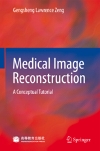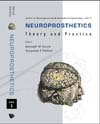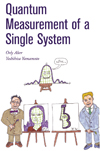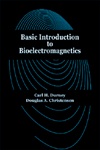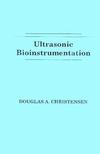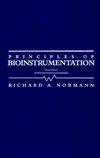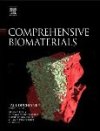
Comprehensive Biomaterials
Edited by Paul Ducheyne, Kevin Healy, Dietmar Hutmacher, David W. Grainger, C. James Kirkpatrick
Biomaterials is a dynamic, changing field that impacts modern medicine and therapeutics in diverse ways. This modern, all-encompassing comprehensive treatment accurately captures the diversity, breadth and dimensions of the biomaterials field. It describes the many modern aspects of biomaterials – from basic science to clinical applications – across the formulations and chemistry of polymers, ceramics and metals and their use in various biomedical devices and implants, as well as their clinical performance and host responses. Conventional clinically accepted biomaterials as well as emerging prototypes, studies and new ideas, along with visionary predictions of future biomaterials compositions and capabilities, are all extensively covered by hundreds of experts in the field.
This work is of interest to any student, researcher or engineer working in biomaterials, medicinal research, cell biology, tissue engineering, tissue physiology, regenerative medicine, microfabrication, and biomedical devices and applications.
With 253 chapters, 3672 pages in 6 volumes by hundreds of experts, this represents the state-of-the-field in a single source.
Medical Image Reconstruction
Gengsheng Lawrence Zeng
“Medical Image Reconstruction: A Conceptual Tutorial” introduces the classical and modern image reconstruction technologies, such as two-dimensional (2D) parallel-beam and fan-beam imaging, three-dimensional (3D) parallel ray, parallel plane, and cone-beam imaging. This book presents both analytical and iterative methods of these technologies and their applications in X-ray CT (computed tomography), SPECT (single photon emission computed tomography), PET (positron emission tomography), and MRI (magnetic resonance imaging). Contemporary research results in exact region-of-interest (ROI) reconstruction with truncated projections, Katsevich’s cone-beam filtered backprojection algorithm, and reconstruction with highly undersampled data with l0-minimization are also included.
This book is written for engineers and researchers in the field of biomedical engineering specializing in medical imaging and image processing with image reconstruction.
Gengsheng Lawrence Zeng is an expert in the development of medical image reconstruction algorithms and is a professor at the Department of Radiology, University of Utah, Salt Lake City, Utah, USA.
Mathematical Physiology
James P. Keener, University of Utah
Winner of the 1998 Association of American Publishers “Best New Title in Mathematics”
This book provides an overview of mathematical physiology containing a variety of physiological models. The book is in two parts: the first part is a pedagogical presentation of some of the basic theory, with chapters on biochemical reactions, diffusion, excitability, wave propagation and cellular homeostasis. The second, more extensive part discusses particular physiological systems, with chapters on calcium dynamics, bursting oscillations and secretion, cardia cells, muscles, inercellular communication, the circulatory system, the immune system, wound healing, the respiratory system, the visual system, hormone physiology, renal physiology, digestin, the visual system and hearing.
This book will be of interest to researchers and graduate students in applied mathematics interested in physiological problems and to quantitative physiologists wishing to know about current and new mathematical techniques.
Neuroprosthetics – Theory and Practice
Edited by Kenneth W Horch & Gurpreet S Dhillon
Neuroprosthetics is an area of intense scientific and clinical interest and rapid progress. Since the introduction of the cardiac pacemaker in 1932, we have seen developments that include cochlear prostheses, techniques for bladder and bowel control, deep brain stimulation, and restoration of mobility and respiration to paralyzed individuals. The chapters in this book have been contributed by authors who are recognized internationally in their fields. The result is a comprehensiveand up-to-date review that will be invaluable to graduate students, clinicians and researchers in neuroprosthetics. It is broadly divided into three sections: Section 1 provides a core of knowledge that forms a foundation for the rest of the book, and covers basics of neuroanatomy and neurophysiology, biomaterials and biocompatibility, stimulation and recording techniques; Section 2 describes current clinical applications of neuroprosthetics; Section 3 looks at future developments in the field.
Computational Cardiology
Frank B. Sachse, University of Utah
This book is devoted to computer-based modeling in cardiology, by taking an educational point of view, and by summarizing knowledge from several, commonly considered delimited areas of cardiac research in a consistent way.
First, the foundations and numerical techniques from mathematics are provided, with a particular focus on the finite element and finite differences methods. Then, the theory of electric fields and continuum mechanics is introduced with respect to numerical calculations in anisotropic biological media. In addition to the presentation of digital image processing techniques, the following chapters deal with particular aspects of cardiac modeling: cardiac anatomy, cardiac electro physiology, cardiac mechanics, modeling of cardiac electro mechanics.
This book was written for researchers in modeling and cardiology, for clinical cardiologists, and for advanced students.
Fluorinated Surfaces, Coatings, and Film (ACS Symposium Series 787)
David G. Castner and David W. Grainger, eds.
Fluorinated Surfaces, Coatings, and Films
is a collection of papers from the ACS Symposium Series which focuses on recent research into the development of lower cost fluorinated polymers for use in the commercial polymer industry. Both basic science and more industrially oriented areas of research are represented.
Quantum Measurement of a Single System
Orly Alter and Yoshihisa Yamamoto
A groundbreaking look at the nature of quantum mechanics.
With new technologies permitting the observation and manipulation of single quantum systems, the quantum theory of measurement is fast becoming a subject of experimental investigation in laboratories worldwide. This original new work addresses open fundamental questions in quantum mechanics in light of these experimental developments.
Using a novel analytical approach developed by the authors, Quantum Measurement of a Single System provides answers to three long-standing questions that have been debated by such thinkers as Bohr, Einstein, Heisenberg, and Schrödinger. It establishes the quantum theoretical limits to information obtained in the measurement of a single system on the quantum wavefunction of the system, the time evolution of the quantum observables associated with the system, and the classical potentials or forces which shape this time evolution. The technological relevance of the theory is also demonstrated through examples from atomic physics, quantum optics, and mesoscopic physics.
Suitable for professionals, students, or readers with a general interest in quantum mechanics, the book features recent formulations as well as humorous illustrations of the basic concepts of quantum measurement. Researchers in physics and engineering will find Quantum Measurement of a Single System a timely guide to one of the most stimulating fields of science today.
Polymeric Drugs and Drug Delivery
Raphael M Ottembrite, Virginia Commonwealth University
SungWan Kim, University of Utah
Polymeric materials are now playing an increasingly important role in pharmaceuticals, as well as in sensor sensing devices, in situ prostheses and probes, and microparticle diagnostic agents. 22 chapters report the latest information in the application of polymers to biological systems.
The information includes: New developments in bioactive polymers for pharmaceutical and biomaterials applications, Polymers as drugs, prodrugs, drug delivery systems, and in situ prostheses, New materials for degradation for controlled drug release, Synthesis, derivatization, characterization, applications, and evaluation techniques, Biodegradable materials, assemblies, hydrogels, telechelic polymers, derivatized polysaccharides, micro- and nanoparticles, mimetic protein networks, and interpenetrating polymers Antimicrobial treatment using polymer systems, Discussions of improved and enhanced material properties for medicinal applications, Over 150 table and figures
Basic Introduction to Bioelectromagnetics
Carl H Durney, Consultant, Santaquin, Utah
Douglas Christensen, University of Utah, Salt Lake City, Utah
The purpose of this book is to explain the basic concepts, fundamental principles, and characteristic behaviors of electric and magnetic fields to those who do not have a background in vector calculus and partial differential equations. Basic Introduction to Bioelectromagnetics discusses in detail the basic concepts of electromagnetics, requiring that the reader need only a background in algebra. The explanations include a minimum of mathematical relationships, with the emphasis on qualitative behaviors and graphical descriptions. This book offers many diagrams and graphs to clarify and illustrate concepts and principles.

Medical and Biological Engineering in the Future of Health Care
Joseph D. Andrade, Editor. University of Utah
Presents 24 papers from the March 1993 American Institute for Medical and Biological Engineering annual event at the National Academy of Sciences. Papers discuss topics such as prioritizing biomedical technologies, health care economics and management, incentives and new programs, information and communication technologies, and innovations in minimally invasive surgery and diagnostics. Annotation c. Book News, Inc., Portland, OR (booknews.com)
Ultrasonic Bioinstrumentation
Douglas Christensen, University of Utah, Salt Lake City, Utah
Topics discussed include the wave equation and its solutions, impedance, power and reflection, acoustical properties of biological tissues, transducers, beam patterns, and resolution, diagnostic imaging configurations, doppler and other ultrasonic flowmeters, and the safety and measurement of ultrasound.
Principles of Bioinstrumentation
Richard Normann, University of Utah, Salt Lake City, Utah
This complete, well-integrated text offers students without extensive background in the field a solid understanding of the principles and applications of analog and digital instrumentation. Examines such topics as basic analog and digital electronic components, systems theory, and the design of analog signal conditioning circuitry for amplification, filtering, and level shifting of signals originating from a variety of transducers. Includes a detailed description of how to interface analog-to-digital converters to a personal computer, in order to digitize and display these signals, store them on magnetic media, and perform elementary digital filter operations. Also provides a review of operational amplifiers, instrumentation amplifiers, and systems theory. Numerous examples and problems are presented throughout the text, and laboratory experiments concluding each chapterprovide “hands on” experience in all areas covered.

Polymer Surface Dynamics
Joseph D. Andrade, Editor. University of Utah
Radiofrequency Radiation Dosimetry Handbook
Carl H. Durney, University of Utah
The Radiofrequency Radiation Dosimetry Handbook was published with the objective of providing the best information then available about electromagnetic energy absorption. In that edition the dosimetric data were limited mostly to the lower part of the electromagnetic spectrum, principally in the 10 kHz-1.5 GHz range, and also to homogeneous spheroidal and ellipsoidal models of humans and other animals. The data clearly demonstrated the importance of frequency, geometric configuration, and orientation in the assessment of biological effects induced by radiofrequency (RF) radiation.
Empirical relations for calculating the rate of energy absorption; some rules of thumb for electromagnetic absorption; and data from the literature for metabolic rates, dielectric constants, and conductivities were also included as well as tables summarizing the experimental data and theoretical techniques are reviewed.
